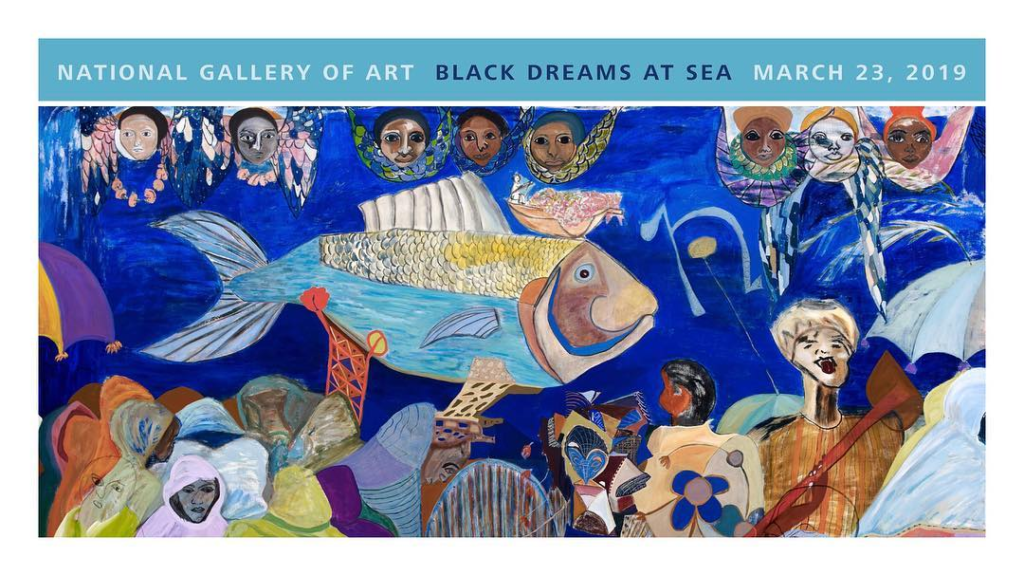Africa experienced a beautiful time during the 60s. The continent gained or was heading towards independence, and its art reflected freedom and liberation. During this time, Artists explored with colors, shapes, and their imagination to bring light to their nations after the darkness that came with colonization. One such artist is Ficre Ghebreyesus. This article will provide a retrospective review of the artist’s work and explain why the recent Frieze art show in Los Angeles, California, featured his work in February 2023.
Ficre Ghebreyesus (1962-2012) was an Eritrean-born artist who spent his formative years as a refugee in New Haven, Connecticut, before becoming a renowned artist. Ghebreyesus’ work is a testament to his unique vision and his experiences, which he used to create vibrant works that meld figuration and abstraction. His art is important because it tells a story of his life and experiences, while also exploring themes that are universal and relatable.
Recently, a program focusing on the works of two artists, Ficre Ghebreyesus and Manthia Diawara, took place at the National Gallery of Art. Both were political refugees and scholars, with Ghebreyesus being a painter from Eritrea and Diawara being a filmmaker from Mali. Following the screening, Elizabeth Alexander and Manthia Diawara discussed Ghebreyesus’ painting, “The Sardine Fisherman’s Funeral,” and Diawara’s film, “An Opera of the World.” Ficre’s paintings are at the National Gallery of Art, where it is being used to open up a conversation on black migration.

Image courtesy of Instagram
As an educator himself, Ghebreyesus would have been ecstatic to witness the important conversations his work is sparking. The program featured a screening of his painting, The Sardine Fisherman’s Funeral, and Manthia Diawara’s film, An Opera of the World, followed by a discussion between Elizabeth Alexander and Diawara, two writers whose work he held in high regard
Ghebreyesus’ art spans various mediums, including painting, drawing, and sculpture. He used bright colors and unconventional shapes to create nonlinear forms that suggested the forms of dreams, memories, and storytelling, making him known for his unique style. His works are a combination of different cultural references, which he used to explore themes such as identity, displacement, and belonging.
Ghebreyesus’ art is important because it speaks to the immigrant experience and the struggle for identity and belonging. He used his work to express his own experiences, while also commenting on broader societal issues. His art is a reflection of the diversity of experiences and the complexity of cultural identity.

48 × 48 cm
Image Courtesy of Artsy
Collectors interested in Ghebreyesus’ art can find it in various galleries and exhibitions including Artsy. Collectors eagerly seek out many of his works, with a premium price tag attached. For instance, the San Francisco Museum of Modern Art (SFMOMA) and the Studio Museum in Harlem have both added one of his artworks to their collection. However, the value of Ghebreyesus’ art goes beyond its monetary worth. His work is a testament to his unique vision and his experiences, and it tells a story that is both personal and universal.
Ghebreyesus’ art has gained a lot of recognition in recent years, with posthumous presentations of his work at the 59th Venice Biennale and other prestigious venues. His art is becoming increasingly important, not only as a reflection of his unique vision but also as a commentary on the complexity of cultural identity.
Ficre Ghebreyesus’ art is important because it tells a story of his life and experiences, while also exploring themes that are universal and relatable. His unique vision and use of unconventional shapes and bright colors make his work stand out and attract collectors. Ghebreyesus’ art is a reflection of the diversity of experiences and the complexity of cultural identity, making it an essential part of the art world.


